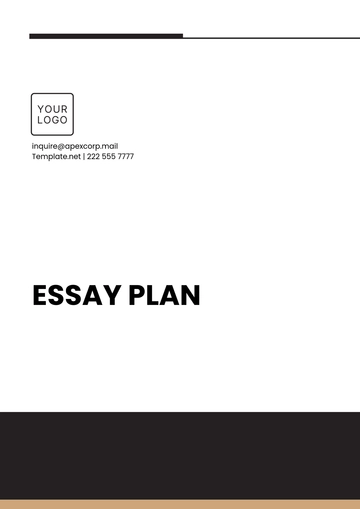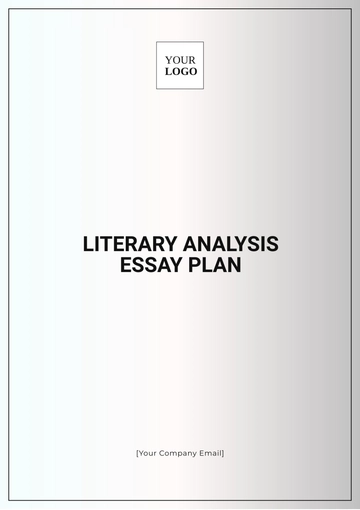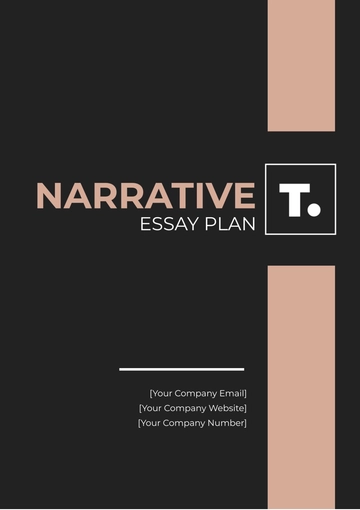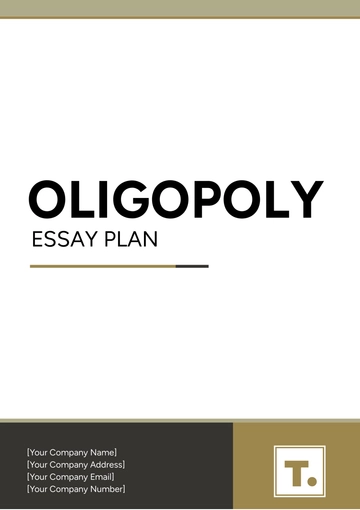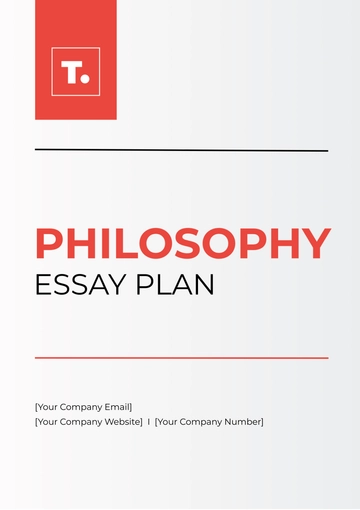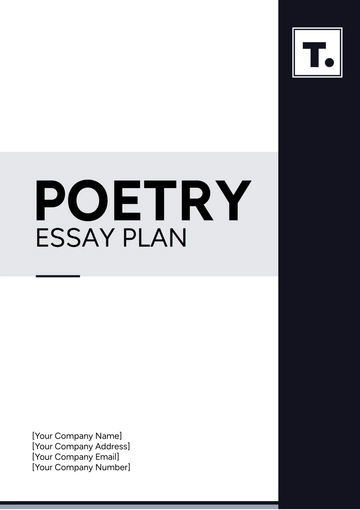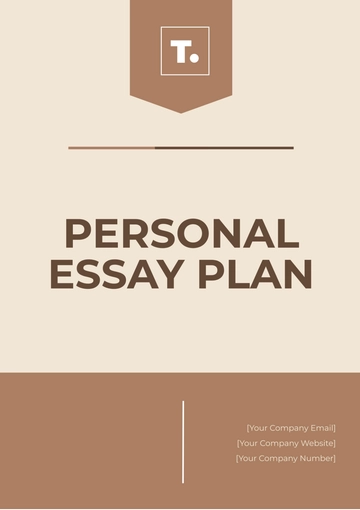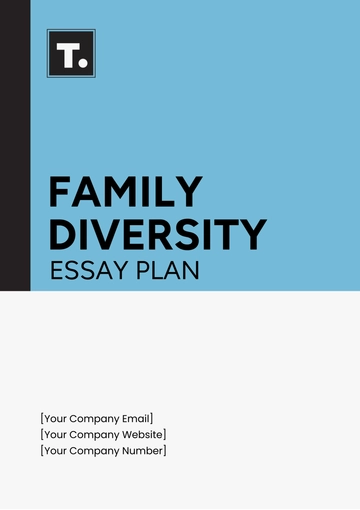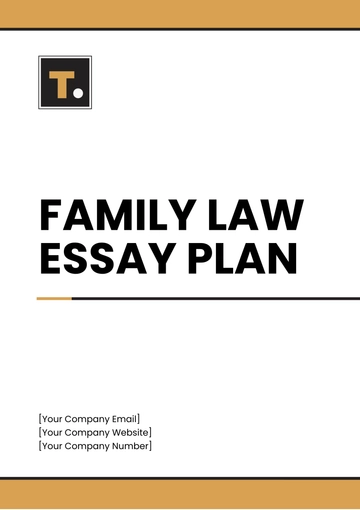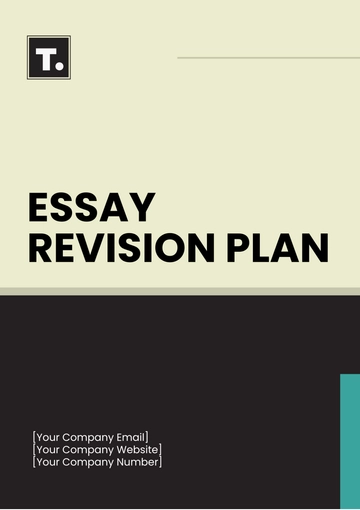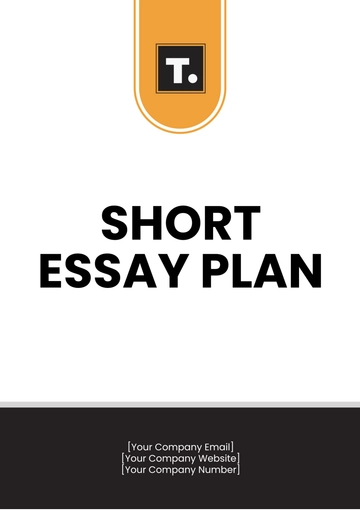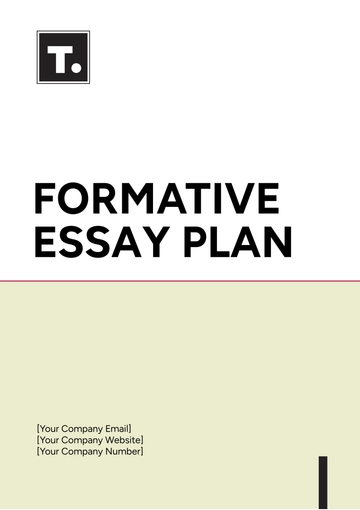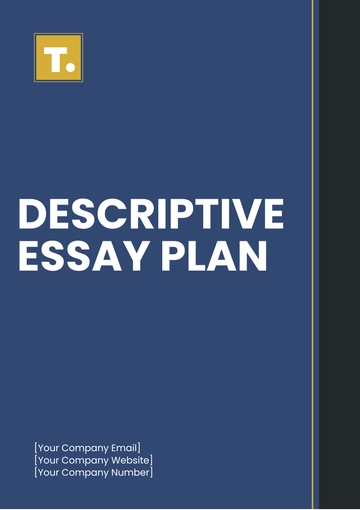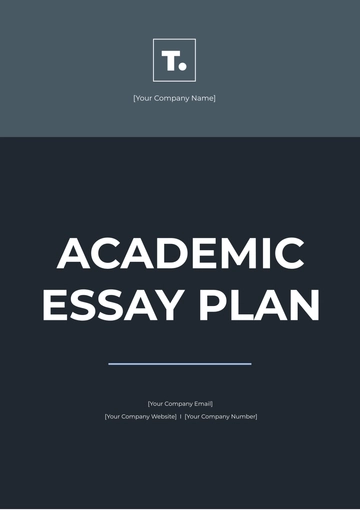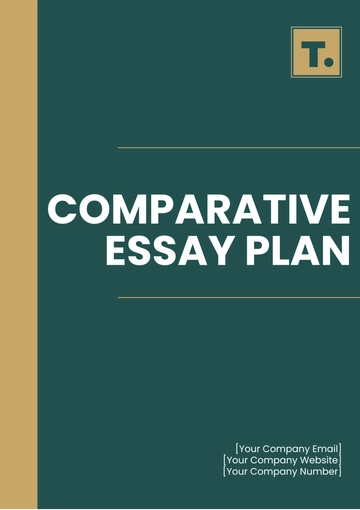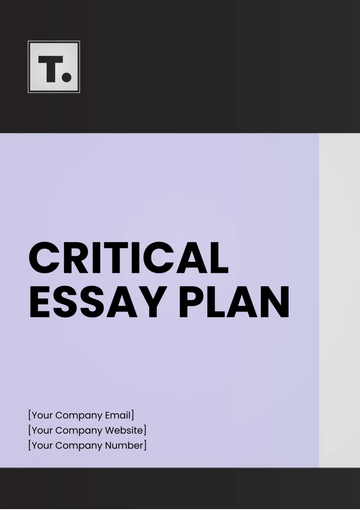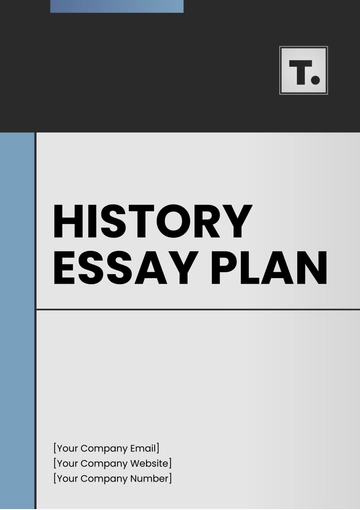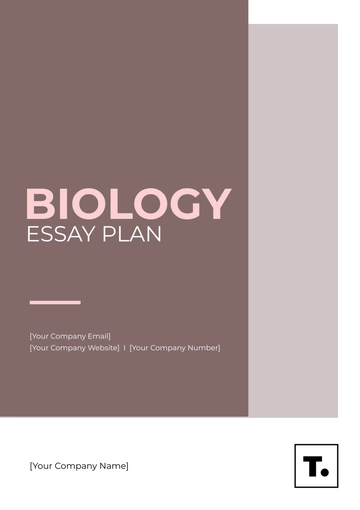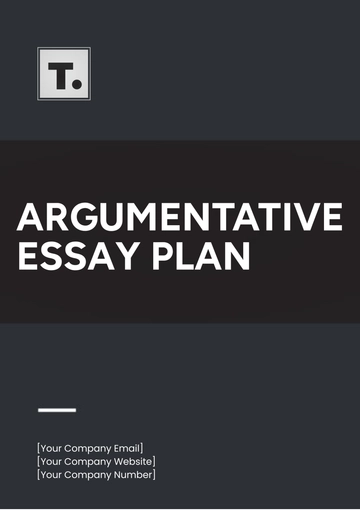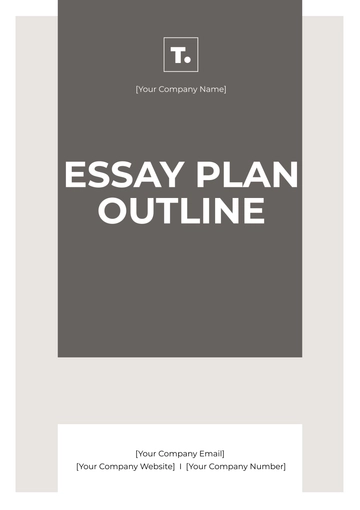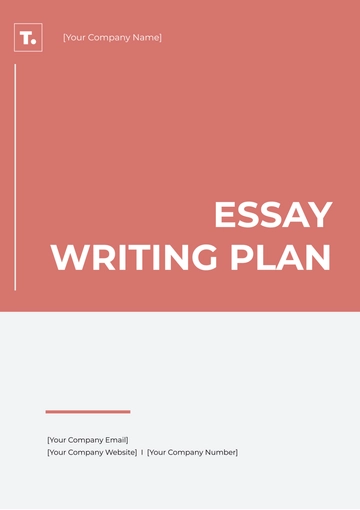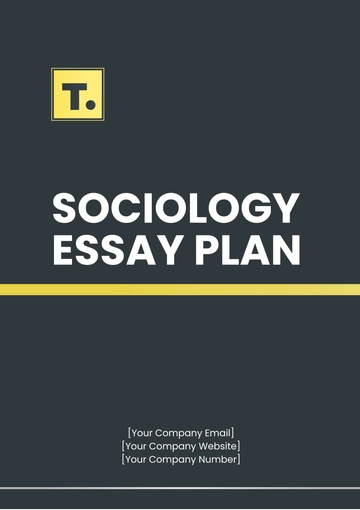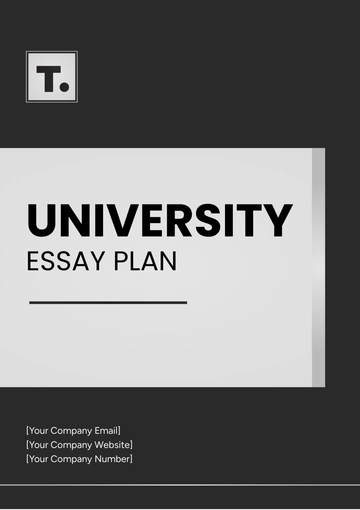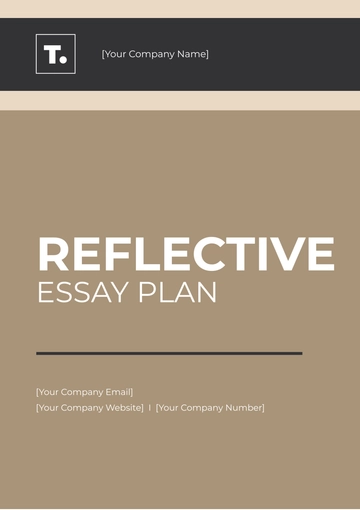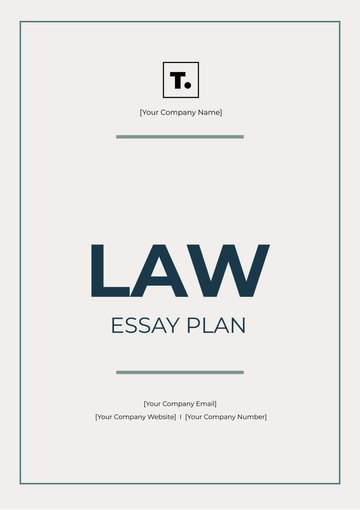Free Narrative Essay Plan
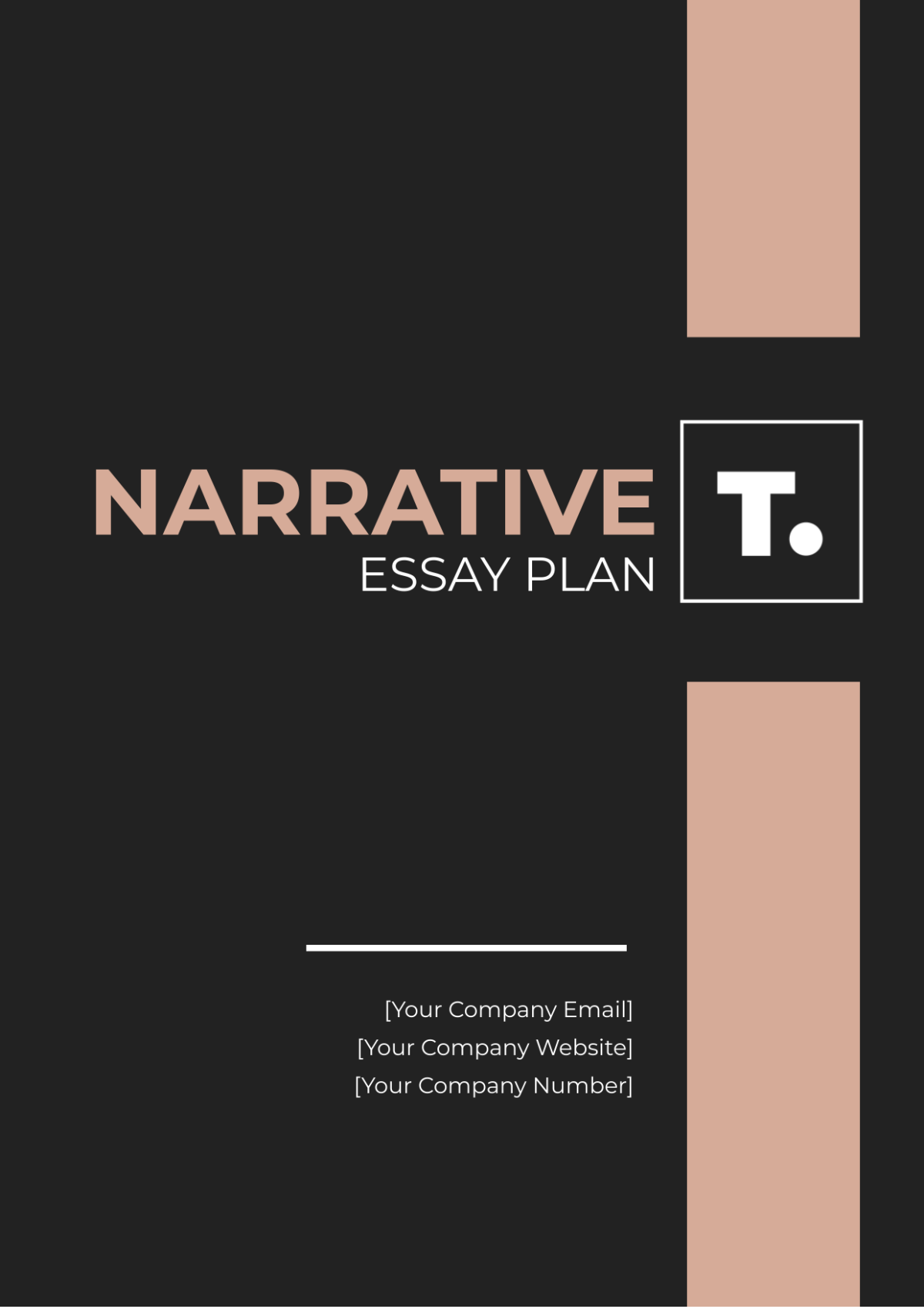
I. Introduction
Objective: Equip [YOUR NAME] to craft a narrative essay that effectively tells a story, weaving together personal experiences or creative elements to illustrate key themes and lessons.
Name: [YOUR NAME]
Course Title: [COURSE TITLE]
Instructor's Name: [INSTRUCTOR'S NAME]
Due Date: June 15, 2050
Hook: [AN ENGAGING STARTER TO CAPTURE INTEREST] - This could be a question, a bold statement, or an intriguing scenario.
Thesis Statement: [THESIS STATEMENT] - A brief statement that sets up the narrative’s purpose and the main message you aim to convey.
II. Setting and Characters
Setting:
Location: [PLACE OR ENVIRONMENT]
Period: [DECADE, SEASON, OR TIME OF DAY]
Main Characters:
Protagonist: [MAIN CHARACTER’S NAME AND A BRIEF DESCRIPTION]
Antagonist or Secondary Characters: [ADDITIONAL CHARACTERS AND THEIR ROLES]
III. Plot Development
Plot Table:
Story Stage | Event Description | Impact on Story |
|---|---|---|
Inciting Incident | [EVENT THAT SETS THE STORY IN MOTION] | Sets up the initial conflict or challenge. |
Rising Action | [KEY DEVELOPMENTS LEADING TO THE CLIMAX] | Builds tension and develops the main issue. |
Climax | [THE TURNING POINT OF THE STORY] | The peak of the story's tension and conflict. |
Falling Action | [EVENTS POST-CLIMAX LEADING TO RESOLUTION] | Begins to resolve the story’s conflicts. |
Resolution | [HOW THE STORY CONCLUDES] | Wraps up the narrative, resolving conflicts and revealing outcomes. |
IV. Conflict and Resolution
Conflict Description: Describe the central conflict or challenge faced by the protagonist.
Type of Conflict: [INTERNAL/EXTERNAL CONFLICT DESCRIPTION]
Resolution Strategy: [HOW THE PROTAGONIST RESOLVES THE CONFLICT]
V. Themes and Lessons
Themes and Lessons Table:
Theme/Message | Details | Lessons Learned |
|---|---|---|
[FIRST MAJOR THEME] | [DETAILS ABOUT HOW THIS THEME IS EXPLORED] | [WHAT LESSONS THE PROTAGONIST LEARNS] |
[SECOND MAJOR THEME] | [ADDITIONAL THEMATIC DETAILS] | [INSIGHTS GAINED OR MORAL OF THE STORY] |
VI. Dialogue and Interaction
Dialogue Highlights: Key conversations or interactions that advance the plot or develop characters.
Important Dialogue: [SIGNIFICANT QUOTE OR EXCHANGE]
Character Interaction: [HOW INTERACTIONS INFLUENCE CHARACTER DEVELOPMENT OR PLOT]
VII. Conclusion
Summary: Brief recap of the narrative, emphasizing the climax and resolution.
Reflective Insight: Reflect on the broader significance of the story’s themes and lessons.
Closing Thought: Leave the reader with a poignant thought or question that reinforces the narrative’s message.
- 100% Customizable, free editor
- Access 1 Million+ Templates, photo’s & graphics
- Download or share as a template
- Click and replace photos, graphics, text, backgrounds
- Resize, crop, AI write & more
- Access advanced editor
Discover the ultimate tool for crafting compelling narrative essays with the Narrative Essay Plan Template from Template.net. This editable and customizable template streamlines your writing process, ensuring coherence and creativity. Craft your narrative seamlessly with the aid of our AI Editor Tool, achieving clarity and impact effortlessly.
You may also like
- Finance Plan
- Construction Plan
- Sales Plan
- Development Plan
- Career Plan
- Budget Plan
- HR Plan
- Education Plan
- Transition Plan
- Work Plan
- Training Plan
- Communication Plan
- Operation Plan
- Health And Safety Plan
- Strategy Plan
- Professional Development Plan
- Advertising Plan
- Risk Management Plan
- Restaurant Plan
- School Plan
- Nursing Home Patient Care Plan
- Nursing Care Plan
- Plan Event
- Startup Plan
- Social Media Plan
- Staffing Plan
- Annual Plan
- Content Plan
- Payment Plan
- Implementation Plan
- Hotel Plan
- Workout Plan
- Accounting Plan
- Campaign Plan
- Essay Plan
- 30 60 90 Day Plan
- Research Plan
- Recruitment Plan
- 90 Day Plan
- Quarterly Plan
- Emergency Plan
- 5 Year Plan
- Gym Plan
- Personal Plan
- IT and Software Plan
- Treatment Plan
- Real Estate Plan
- Law Firm Plan
- Healthcare Plan
- Improvement Plan
- Media Plan
- 5 Year Business Plan
- Learning Plan
- Marketing Campaign Plan
- Travel Agency Plan
- Cleaning Services Plan
- Interior Design Plan
- Performance Plan
- PR Plan
- Birth Plan
- Life Plan
- SEO Plan
- Disaster Recovery Plan
- Continuity Plan
- Launch Plan
- Legal Plan
- Behavior Plan
- Performance Improvement Plan
- Salon Plan
- Security Plan
- Security Management Plan
- Employee Development Plan
- Quality Plan
- Service Improvement Plan
- Growth Plan
- Incident Response Plan
- Basketball Plan
- Emergency Action Plan
- Product Launch Plan
- Spa Plan
- Employee Training Plan
- Data Analysis Plan
- Employee Action Plan
- Territory Plan
- Audit Plan
- Classroom Plan
- Activity Plan
- Parenting Plan
- Care Plan
- Project Execution Plan
- Exercise Plan
- Internship Plan
- Software Development Plan
- Continuous Improvement Plan
- Leave Plan
- 90 Day Sales Plan
- Advertising Agency Plan
- Employee Transition Plan
- Smart Action Plan
- Workplace Safety Plan
- Behavior Change Plan
- Contingency Plan
- Continuity of Operations Plan
- Health Plan
- Quality Control Plan
- Self Plan
- Sports Development Plan
- Change Management Plan
- Ecommerce Plan
- Personal Financial Plan
- Process Improvement Plan
- 30-60-90 Day Sales Plan
- Crisis Management Plan
- Engagement Plan
- Execution Plan
- Pandemic Plan
- Quality Assurance Plan
- Service Continuity Plan
- Agile Project Plan
- Fundraising Plan
- Job Transition Plan
- Asset Maintenance Plan
- Maintenance Plan
- Software Test Plan
- Staff Training and Development Plan
- 3 Year Plan
- Brand Activation Plan
- Release Plan
- Resource Plan
- Risk Mitigation Plan
- Teacher Plan
- 30 60 90 Day Plan for New Manager
- Food Safety Plan
- Food Truck Plan
- Hiring Plan
- Quality Management Plan
- Wellness Plan
- Behavior Intervention Plan
- Bonus Plan
- Investment Plan
- Maternity Leave Plan
- Pandemic Response Plan
- Succession Planning
- Coaching Plan
- Configuration Management Plan
- Remote Work Plan
- Self Care Plan
- Teaching Plan
- 100-Day Plan
- HACCP Plan
- Student Plan
- Sustainability Plan
- 30 60 90 Day Plan for Interview
- Access Plan
- Site Specific Safety Plan
